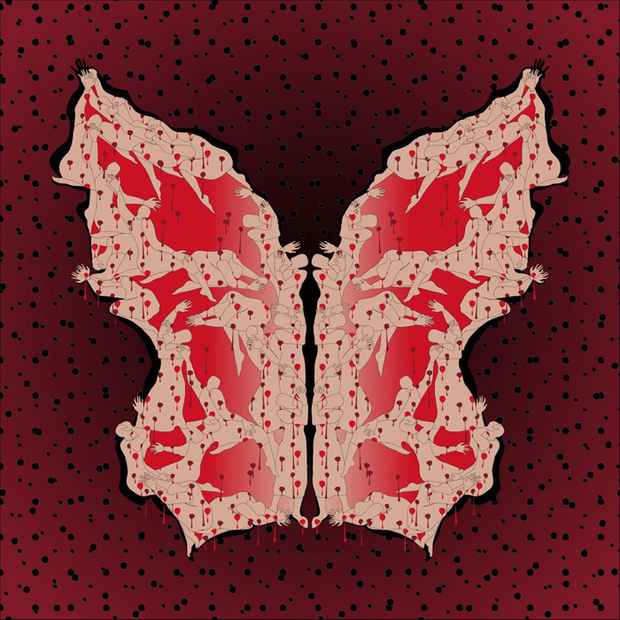Parastou Forouhar Exhibition
RH Gallery

This event has ended.
This exhibition presents new and recent works of photography, digital drawings and installation including Boardgames, Butterflies, Swanrider, Countdown, Eslimi and Thousand and One Day. Parastou Forouhar was born in 1962 in Tehran and has lived in Germany since 1991. Her work has been exhibited at the Hamburger Bahnhof (Berlin), the Berlin Biennale, Martin-Gropius-Bau (Berlin), Jewish Museum of Melbourne and Brooklyn Museum among others.
Many diverse narratives are embedded in Forouhar's work. Her homeland, Iran, is a constant theme but it is complex and in flux. In her own words: “I can tell you beautiful stories about my
homeland, which may not be true.... At some point, I started re-building the idea of my homeland into a fortress of illusions. I search for my homeland by writing words of my mother tongue in soft, rhythmical, inviting lines, remembering the openness and ambivalence of the beautiful Persian patterns that the old masters of past centuries have left to us.” Beyond Iran, there is also the collective memory of Germany where Forouhar has lived since 1991. As in Anselm Kiefer, the experience of collective memory is inescapable in Forouhar's work. There is also a violence that is not only remembered, but present. Like Mona Hatoum, Forouhar appropriates the tools of oppression.
The discourse on Parastou Forouhar’s oeuvre often focuses on a tragic moment that forever changed her life and work. Forouhar’s parents, Dariush and Parvaneh Forouhar, respected intellectuals who fought for democracy in Iran, were savagely murdered in their home on November 21st, 1998. Forouhar has persistently campaigned for a proper investigation into the extra-judicial executions of her parents and other activists murdered in Tehran during the autumn of 1998. Her commitment to justice and her incredible strength of character are perhaps the foundation for the power emanating from her work. However, the constant tension between beauty and brutality is not only personal, or even Iranian as it is often labeled, but universally human.
Forouhar's digital drawings are often labyrinths built from patterns inspired by classical Persian ornamentation. The nature of patterns is inherently tyrannical yet sensual. A pattern can be beautiful yet it is constructed with rigid laws and confines its imagery into prisons of repetition. In Forouhar’s new Butterflies series, patterns are confined within butterflies, reflecting the opposition between oppression and freedom with reference to the protests against Iran’s disputed election in June 2009.
Viewers are often implicated in the violence portrayed in Forouhar’s work. In her Thousand and One Day Flipbooks, the viewer is an active participant in the narrative. In a new series of works titled Boardgames, pawns and dice invite viewers to play games on boards made with digital drawings of figures adorned with weapons. The implication of the viewer is reiterated. In Eslimi, Forouhar created a book of textiles inspired by traditional Islamic fabrics which she has recreated in her own subtly brutal yet elegant language.
"The role of art in times of suppression of human rights is to create space for reflection. Perhaps art cannot give any definite answers, but it can invite the public to think about the injustices like torture. Of course, this is not the only way to make art, but it is one possibility." - Parastou Forouhar in Pearls on the Ocean Floor, 2010.
There will be two documentary films screened in conjunction with this exhibition: Pearls on the Ocean Floor by Robert Adanto and Dariush and Parvaneh Forouhar by Thomas Giefer.
Media
Schedule
from November 21, 2010 to January 10, 2011
Opening Reception on 2010-11-20 from 18:00 to 20:00